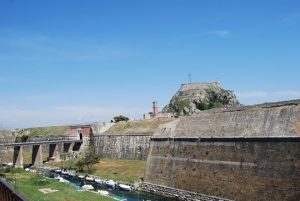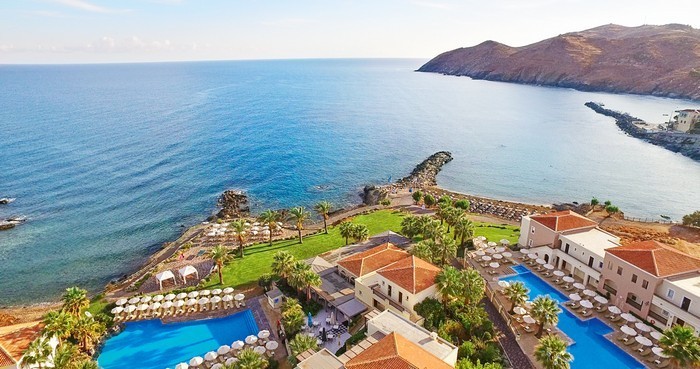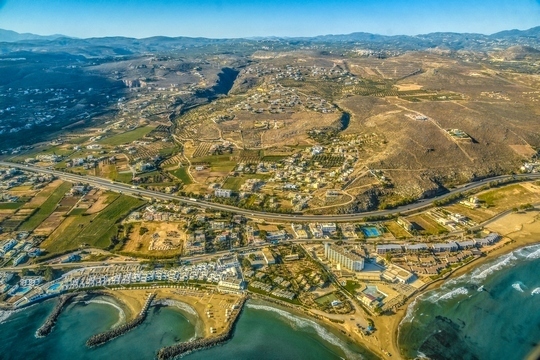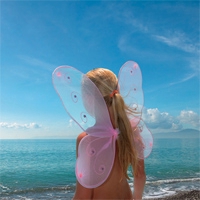Emerald Island
 Corfu is considered to be one of the most attractive islands of the Mediterranean. It is the northernmost island in the Ionian Sea and the closest to Italy is the point of Greece. Many conquerors wanted to rule over the amazing land of the Greek gods, and the great creators sang in their works the amazing beauty of the island.
Corfu is considered to be one of the most attractive islands of the Mediterranean. It is the northernmost island in the Ionian Sea and the closest to Italy is the point of Greece. Many conquerors wanted to rule over the amazing land of the Greek gods, and the great creators sang in their works the amazing beauty of the island.
Surviving the reigns of various conquerors of Corfu, they absorbed the traditions, lifestyle and diversity of cultures that at various times flourished on the island, and partially reached our days. The island surprises with incomparable beauty, combining various historical epochs, harmoniously combining architectural structures, monuments and sights completely different in style.
According to legend, the island was named after the nymph Kerkora, the daughter of the god of the river Asopa. Poseidon, who had inflamed her with love, kidnapped the nymph and brought it to the island, which he later named in her honor. From their love, a son was born, Faek, and all the inhabitants of this island became known as the Faak. They were considered one of the blessed nations close to the gods. Over time, the name of Kerkor turned into Kerkyra. And still the inhabitants of the island call it Kerkyra, and not Corfu, under which the island is better known in modern times.
In antiquity, Kerkyra is referred to by various names: Drepani, Makris, Scheria, Fotakia, Corcyra, Theakia, Cassiopeia. The island is also known as the place where the Argonauts fleeing from the pursuit of the Colchis fleet found shelter. Here took place the wedding of Jason and the sorceress Medea. Odysseus visited this island as the last during his travels, it was here that the gods sent the savior, Navsikayu, to the Odyssey, cast ashore by the storm. It is believed that Corfu was the place where Hercules spent the night with the mollusk Melita before committing his famous ten feats.
Many more myths and legends can be enumerated, and all of them are connected with the island, the area of which is 593 km2 with a coastline of 217 km. The northern part of the island is located off the coast of Albania, and the southern part of the island is located opposite the coast of Thesprotia. The name Corfu is derived from the Italian changed from the Byzantine Korifo – a city of mountains (from the Greek Korifai – the mountain ridge). The capital of the island is the eponymous city of Corfu.
In historical times, the island was part of ancient Greece and was captured by the Romans, later, it became part of the Byzantine Empire, was captured by the Crusaders. Then a whole series of conquerors visited here: the Normans, the Anjou dynasty, the Venetians ruled here for 4 centuries, then the French, the Russians, the English. But Corfu has never been under Turkish rule.
Rugged landscapes with olive and cypress groves, plains, wooded areas interspersed with vineyards and gardens, cliffs decorated with spring flowers on the mountains of the northern part of the island, lakes and sand dunes, colorful fields on which melons, beans and maize grow all create a unique color gamma. At Corfu you can find all shades of green. In the middle part of the island, Mount Pantokrator stands proudly. No less picturesque and east coast. Moving south you will find hills completely covered with olive groves, low beaches and spacious beaches stretching to the horizon. The most interesting attraction of this part of the island is Lake Korision, which is declared a natural reserve. This is a country of sand dunes, covered with cedars, willows and other trees, well growing on the sand.
The island’s cuisine has experienced a strong Venetian influence and still retains cooking techniques and the names of many local dishes. Specialties of Kerkyra (such as pastitsda, sofrito and burdeto) can be ordered in many restaurants around the island. There are various types of restaurants on Kerkyra: from fast food restaurants, pizzerias and taverns to chic restaurants with cuisine of various nations (Italian, French, Mexican, Indian, Chinese, etc.). Local desserts, for example, grape, fig, quince and kumkuatov jam and liqueurs, are extraordinarily tasty.
The sea washing Kerkyra creates a temperate climate, bringing fresh wind even in hot weather. The beaches of the island are diverse: sand, small and large pebbles.



